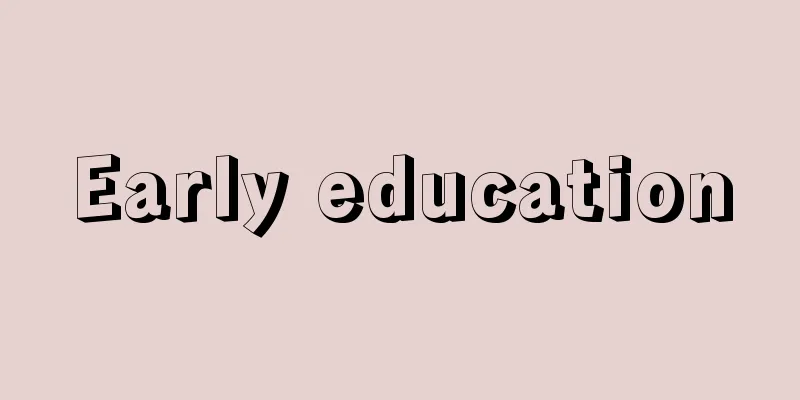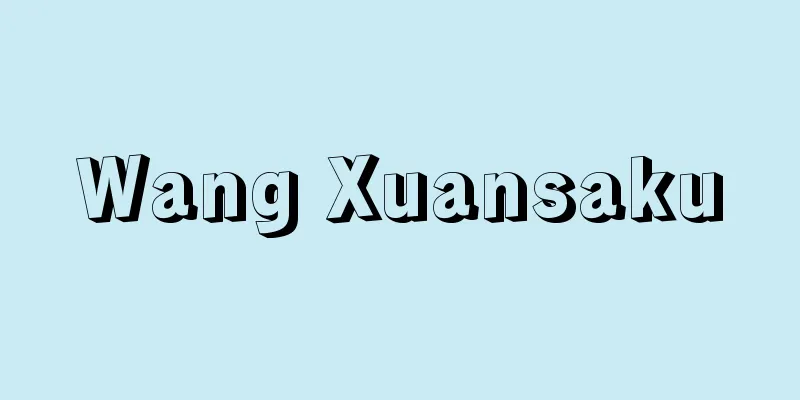Early education

|
In a broad sense, it refers to education that is given in the early stages of development, that is, in infancy. In countries and regions where there are classes of people who cannot receive early childhood education due to poverty, public early education is considered to be compensatory education, building a foundation for learning in subsequent school education and a means of breaking away from the vicious cycle of poverty caused by cultural disadvantage. In addition, for infants and young children with developmental disabilities, the earlier educational intervention is considered to be the more effective, and early education is actively used as an early intervention. In the narrow sense, it refers to private education given to infants and young children with the aim of developing their talents or getting ahead in learning after entering school. Early education is generally understood in this narrow sense. In the past, the term "early education" was used. In the narrow sense, early education aims to give children from societies and classes with a basic cultural environment more educational stimulation, thereby giving them superior characteristics and skills than other children. This stems from parents' simple desire to discover and develop their children's abilities early, as well as the desire to make their children better than others in a competitive and academic society, and distrust in school education. At the same time, it is also supported in part by the negative motivation of not wanting their children to fall behind other children. [Theoretical background of early education] Gesell, AL et al. (1929) started training one twin to climb stairs first, and the other seven weeks later, and found that the latter was able to climb stairs as fast as the first-trained child after only two weeks of training. He called the neurological basis of maturation that makes learning and training possible "readiness," and said that learning before readiness is complete is ineffective and meaningless. This was the basis for the argument against early education. On the other hand, the idea that early experiences, i.e. experiences during early development, have an important influence on later life, can be seen in Freud's (1905) theory of childhood sexuality and personality formation. Lorentz's (1937) theory of imprinting provides a proven biological basis for early experiences. It was found that there is a critical period during imprinting, during which learning does not occur if that period is missed. This was linked to Montessori's (1938) claim that there is a period of special sensitivity during infancy, i.e. a sensitive period, and that if educational intervention is not provided during this sensitive period, the opportunity to develop abilities will be lost. This became the basis for early education. Furthermore, in the United States, where the Sputnik shock of 1957 made people aware of the country's educational backwardness, Bruner, JS (1962) argued that with creative curricula and teaching methods, it was possible to teach subjects to children at any developmental stage, and that readiness could be created. Subsequent developments in infant psychology research using the preferential attention method and habituation-dishabituation methods demonstrated that infants, who had previously been considered passive and lacking in learning ability, actually had rich cognitive and learning abilities, such as the ability to distinguish between sounds and faces, and basic awareness of the physical and spatial world, impressing upon the children's competence. This assertion of competence became a major driving force in promoting early education. [Early education in practice] Talent development in artistic, physical and intellectual aspects includes lessons and classes for piano, violin, painting and art classes, swimming and soccer, as well as what are called intelligence classes, which use flash cards and other tools to provide a large amount of stimulation and train information processing. One of the most well-known methods is the Suzuki Method for playing musical instruments (violin, cello, piano, flute). In the Suzuki Method, children first listen to a piece of music repeatedly, and then have the child watch their mother or other children learn it, thereby stimulating their interest. Only when the child says that they want to do it themselves can they begin practicing. In this way, the emphasis is on encouraging children to take part in activities on their own initiative by providing a musical environment, presenting a model, and increasing intrinsic motivation. To prepare students for post-school learning in subjects such as Japanese, arithmetic, mathematics, and English, there are various correspondence education materials, video materials, and English classes for young children. One such method that has been developed internationally is the Kumon method of education. In the Kumon method of education, printed materials are used that are made up of small steps that students can solve on their own by being given example and similar problems for Japanese (reading comprehension and reading ability), arithmetic, mathematics (calculation ability), and English (English reading comprehension). Children proceed with printed study at their own pace, regardless of their grade level. This allows them to complete tasks according to their individual abilities, giving them confidence that they can do it and increasing their motivation to proceed with the tasks. [Effectiveness of Early Education] In the days before the public education system, education had to be provided at home. There are examples of people who were raised to be gifted through classical early education by their parents, such as Witte, K. and Mill, JS. For example, Mill was forbidden by his father to play with children his own age, and he studied Greek at the age of three, Latin and mathematics at the age of eight, ethics from the age of twelve, and political economy from the age of thirteen, and later achieved great success as a philosopher and economist. However, Mill himself states in his autobiography that the education he received was "an education not of love, but of fear." He also faced a "mental crisis" at the age of twenty, and suffered from a lack of motivation and depression. In this way, there are examples of people who, despite their intellectual success, had problems with their social development. The effectiveness and results of modern early education are reported only in case studies. No doubt there are also failures, but these are rarely reported. Even in good cases, it is not clear whether early education created the child's talents, or whether children who were already talented simply developed their talents through early education. There is insufficient objective evaluation, such as data collection by a third party not involved in the education in question or comparison with a control group, regarding the effectiveness of early education, or conversely, the possibility that excessive stimulation and competition from an early age can lead to psychological and social instability. There are also many problems with verification, such as how and when it is appropriate to evaluate the results of early education. [Talent education] Talent development education after childhood is not carried out in public education, but is developed in the field of private education. The Shogi Shogi Association, the Go Graduate Student System, and the Japan Football Association's JFA Academy are systems to develop talented children. On the other hand, advanced special education for children with superior intellectual abilities after childhood is called gifted education. In Japan, it is not considered part of primary and secondary education, but in the United States and other countries, it is considered a form of special needs education. However, there were examples of the Shishu system (entering the old-style high school upon completion of the fourth year) in the old-style middle school (five-year system), and special science classes (selecting students who excelled in physics, chemistry, biology, and mathematics from the fourth to sixth grades of national schools and the first to third grades of old-style middle schools) established in 1944 at the end of the Pacific War in Tokyo, Hiroshima, and other higher normal schools. Currently, in higher education, early admission is possible at universities such as Chiba University, and many graduate schools have early completion systems. →Special Needs Education →Early Childhood Education [Jun Nakazawa] Latest Sources Psychology Encyclopedia Latest Psychology Encyclopedia About Information |
|
広義には発達の早期,すなわち乳幼児期に行なわれる教育をいう。貧困などにより乳幼児教育を受けられない階層がある国や地域では,公的な早期教育は補償教育としてその後の学校教育における学習の基盤を作り,文化的不利益による貧困の悪循環からの離脱のための手段とされる。また,発達上のハンディキャップをもつ乳幼児には,教育的介入が早期であるほど効果も大きいとされ,早期介入としての早期教育が積極的に行なわれている。 狭義には,乳幼児期に才能開発ないしは就学後の学習の先取りを目的として行なわれる私的教育をいう。早期教育は,この狭義の意味でとらえるのが一般的である。なお,古くは「早教育」という語が用いられた。狭義の早期教育は,基本的な文化的環境が整っている社会や階層の子どもに,さらに多くの教育的刺激を与えることで,他児に勝る特性や技能をもたせることをめざすものである。これは,子どものもつ能力を早期に見つけ,開花させたいという保護者の素朴な欲求とともに,競争社会や学歴社会のなかで,子どもを他児以上の存在にしたいという願望,また学校教育への不信に起因する。同時に,子どもを他児に遅れないようにしたいという消極的な動機に支えられている部分もある。 【早期教育の理論的背景】 ゲゼルGesell,A.L.ら(1929)は,双生児の一方に階段登りの訓練を先に始め,もう一方にその7週間後から訓練を始めたところ,後者は2週間の訓練のみで先行訓練児と同じ程度の速さで階段に登れることを見いだした。彼は学習や訓練を可能とする成熟の神経学的基盤をレディネスreadinessとよび,レディネスが整わない時期の学習は効果がなく無意味であるとした。これが早期教育への反対論の根拠となっていた。 一方,初期経験early experience,すなわち発達初期の経験が後の人生に重要な影響を与えるという考えは,フロイトFreud,S.(1905)の小児性欲と性格形成の理論に見ることができる。初期経験の実証的な生物学的基盤としてローレンツLorentz,K.Z.(1937)の刻印づけがある。刻印づけにはその時期を逃すと学習が生起しなくなるという臨界期critical periodがあることが見いだされ,それはモンテッソーリMontessori,M.(1938)の,生物の幼児期には特別に敏感な状態の時期,すなわち敏感期sensitive periodがあり,敏感期に教育的働きかけを行なわないと能力を伸ばす機会を失ってしまうという主張とつながり,早期教育の根拠とされた。 さらに,1957年のスプートニク・ショックで教育の立ち後れを意識したアメリカにおいて,ブルーナーBruner,J.S.(1962)は,カリキュラムや教育方法を工夫すれば,どのような発達段階にある子どもにも教科を教えることができるとし,レディネスは作るものだとした。また,その後の選好注視法や馴化-脱馴化法を用いた乳幼児の心理学研究の発展は,それまで受動的で学習能力が乏しいとみなされていた乳幼児にも音韻や顔の弁別能力や,物理的空間世界の基本的認識など豊かな認知・学習能力があることを示し,子どもの有能性を印象づけた。こうした有能さの主張は,早期教育を促す大きな原動力となった。 【早期教育の実際】 芸術的,運動的,知的側面における才能開発には,ピアノ,バイオリン,絵画や造形教室,スイミング,サッカーなどのおけいこ事や教室,またフラッシュカードなどを用いて多量な刺激を与え情報処理を訓練する知能教室などとよばれるものなどがある。世界的に著名なものとして,楽器演奏(バイオリン,チェロ,ピアノ,フルート)の鈴木メソードが挙げられる。鈴木メソードでは,初め子どもに曲を繰り返し聞かせ,次に母親やほかの子が習うのを見せつづけることで興味を喚起する。そして,子どもが自分もやりたいと言ってきた時に初めて練習を始める。このように,音楽的環境を整え,モデルを提示し,内発的動機づけを高めることで,自発的に活動に取り組むことを重視している。 国語や算数・数学,英語など就学後の学習の先取りには,各種の通信教育教材や映像教材,幼児英語教室などがある。国際的に展開されているものとして,公文式教育がある。公文式教育では,国語(読解力・読書力),算数・数学(計算力),英語(英文読解力)について,例題や類題が示されることにより自力で解くことのできるスモールステップで構成されたプリント教材が用いられる。子どもは自己のペースで,学年にとらわれず,プリント学習を進めていく。これにより,個の能力に応じた課題の遂行が可能となり,子どもはできるという自信をもち,課題を進める動機づけを高めている。 【早期教育の有効性】 公教育制度がなかった時代には,教育は家庭で担わねばならなかった。このような親による古典的早教育により,ビッテWitte,K.やミルMill,J.S.など才能豊かに育てられた例が見られた。たとえば,ミルは父親から同年齢の子どもと遊ぶことを禁じられ,3歳でギリシア語を,8歳にはラテン語,数学を,12歳からは倫理学,13歳からは政治経済学を学び,のちに哲学者・経済学者として大きな成功を収めた。しかし,ミル自身は自伝で,自分が受けた教育を「愛の教育ではなくて,恐怖の教育であった」と述べている。また彼は20歳のときに「精神的な危機」と直面し,意欲の低下やうつに悩まされることになった。このように知的成功の裏で社会的発達に問題を残す例も見られた。 現代の早期教育の有効性や成果については,事例的な報告にとどまる。失敗事例もあるはずであるが,それらが報告されることはほとんどない。優れた事例の場合にも,早期教育が子どもの才能を作り上げたのか,本来才能のある子どもが早期教育の中で単にその才能を伸ばしたのかは明らかではない。早期教育の有効性,あるいは逆に幼少期からの過度の刺激づけや競争が,心理的,社会的な不安定をもたらす可能性について,当該の教育の関係者ではない第三者がデータ収集や統制群との比較を行なうというような客観的評価は不十分である。また,早期教育の成果を何によって,いつの時点で評価するのが適切であるのかなど,検証上の問題も多い。 【才能教育talent education】 児童期以降の才能伸張教育は,公的教育の中で行なわれることはなく,私的教育の領域で展開されている。将棋の奨励会や囲碁の院生制度,日本サッカー協会のJFAアカデミーは才能ある子どもを伸ばすシステムである。一方,児童期以降の,知的能力が優れた子どものための先取り的な特別教育は英才教育gifted educationとよばれる。日本では初等中等教育の中に位置づけられてはいないが,アメリカなどでは特別支援教育の一つとされる。ただし,かつては旧制中学(5年制)における四修(4年修了時に旧制高等学校に入学),太平洋戦争末期の1944年に東京・広島などの高等師範学校附属学校に設けられた特別科学学級(国民学校4~6年生,旧制中学の1~3年生から物理学,化学,生物学,数学に秀でた生徒を選抜)の例があった。現在,高等教育においては,千葉大学などで飛び入学,また多くの大学院で早期修了制度が行なわれている。 →特別支援教育 →幼児教育 〔中澤 潤〕 出典 最新 心理学事典最新 心理学事典について 情報 |
<<: Airborne early warning aircraft
>>: Early type star - Soukigatasei
Recommend
Kamo (Toyama) - Kamo
...Located in the western part of the Toyama Plai...
box-office production value
...A star, in the sense of a brilliant presence t...
Domostroi (English spelling)
...The "Velikie Chet'i-Minei" (1552...
Gabe, J.
…G. Bogle was sent in 1874, S. Turner in 1882, an...
Williams, Channing Moore
Year of death: 1910.12.2 (1910.12.2) Born: July 18...
Uzaemon
→ Ichimura Uzaemon Source : Heibonsha Encyclopedia...
Freycinetia
...A climbing woody plant of the family Pandanace...
Factorial function
…Differential methods use unique functions to all...
syndicalisme révolutionnaire (English spelling) syndicalisme révolutionnaire
…It is often used with an adjective indicating th...
Ataka Pass - Ataka Pass
...This idea was a hit and was very well received...
"The Tale of Oto" - Oto Monogatari
…Nagahide, whose fate was almost certain, was rec...
League of Iroquois
A political alliance of five Native American trib...
Amyloplast - Amyloplast
…They are found in undifferentiated plant cells s...
Ochanomizu - Ochanomizu
This district stretches from Kanda Surugadai in C...
cuproscheelite
…Tungstate minerals are divided into the scheelit...









